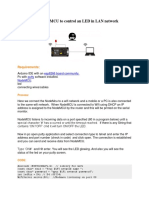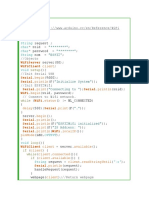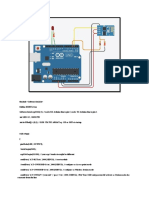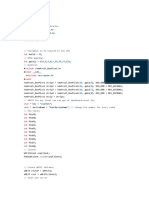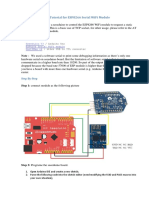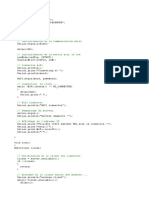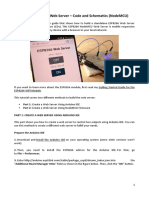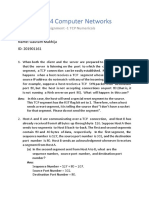0% found this document useful (0 votes)
77 views2 pagesESP8266 Sample Program - Ino
This document contains code for an ESP8266 WiFi module that controls 3 LEDs based on commands received from an Android device over WiFi. It connects to WiFi, sets up a web server, defines functions to check for commands and send responses, and includes a loop to listen for commands and control the LEDs accordingly.
Uploaded by
Future is Now Amazing World VideosCopyright
© © All Rights Reserved
We take content rights seriously. If you suspect this is your content, claim it here.
Available Formats
Download as TXT, PDF, TXT or read online on Scribd
0% found this document useful (0 votes)
77 views2 pagesESP8266 Sample Program - Ino
This document contains code for an ESP8266 WiFi module that controls 3 LEDs based on commands received from an Android device over WiFi. It connects to WiFi, sets up a web server, defines functions to check for commands and send responses, and includes a loop to listen for commands and control the LEDs accordingly.
Uploaded by
Future is Now Amazing World VideosCopyright
© © All Rights Reserved
We take content rights seriously. If you suspect this is your content, claim it here.
Available Formats
Download as TXT, PDF, TXT or read online on Scribd
/ 2

